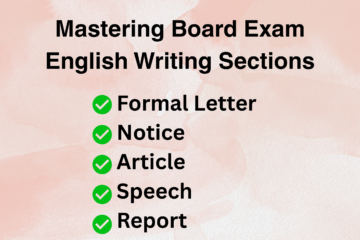Effective Strategies to Make History Engaging and Easy to Remember
History is often perceived as a subject that requires memorizing countless dates, events, and names. However, history is much more than just remembering facts—it is about understanding the cause and effect of events, recognizing patterns, and analyzing human experiences over time. If you struggle with memorization but still want to grasp historical concepts effectively, here are some useful strategies.
1. Focus on the Big Picture
Instead of memorizing every detail, try to understand the broader themes and patterns in history. Ask yourself questions like:
- What caused this event to happen?
- What were the consequences of this event?
- How did different societies react to similar situations? By understanding historical trends and connections, you can better retain information without cramming details.
2. Make Use of Storytelling
History is a collection of stories about people, places, and events. To make it interesting:
- Imagine yourself as a person living in that time period.
- Read historical fiction or watch documentaries that narrate history in an engaging way.
- Create your own short stories or summaries based on historical events. Turning history into a story makes it more memorable and enjoyable.
3. Understand Causes and Effects
Rather than memorizing individual dates and facts, focus on cause-and-effect relationships. Ask:
- What led to this event?
- What changes did it bring? For example, instead of just remembering that World War I started in 1914, understand the political alliances, economic tensions, and events like the assassination of Archduke Franz Ferdinand that triggered the war.
4. Use Visual Aids
Many people find it easier to understand history through visual elements. Try:
- Mind maps to connect ideas.
- Timelines to visualize the sequence of events.
- Infographics and charts to simplify complex historical developments.
- Watching videos that explain historical events visually. These methods make it easier to grasp and recall information.
5. Discuss and Debate
Talking about historical events with friends, teachers, or online study groups can improve understanding. Debating different viewpoints helps to:
- Develop critical thinking skills.
- See history from multiple perspectives.
- Strengthen memory retention by engaging in active discussions. History is not just about facts—it’s about interpretation, so discussing it can help you remember key points.
6. Relate History to the Present
One of the best ways to understand history is by connecting it to current events. Ask yourself:
- How do historical events influence today’s world?
- Are there any similarities between past and present political, economic, or social issues? By making these connections, history becomes more relevant and easier to remember.
7. Use Mnemonics and Acronyms
If you need to remember specific dates or names, use memory aids like:
- Acronyms (e.g., MANIA for the causes of World War I: Militarism, Alliances, Nationalism, Imperialism, Assassination)
- Rhymes and songs to make facts more memorable.
- Associations with familiar words or images. These tricks help store information in your memory without rote memorization.
8. Read from Multiple Sources
Different books and authors provide unique perspectives on history. Reading from various sources helps to:
- Gain a broader understanding.
- Identify biases in historical narratives.
- Find different explanations for events. Using a mix of textbooks, biographies, documentaries, and scholarly articles will enhance comprehension.
9. Take Smart Notes
Instead of writing everything down, focus on:
- Summarizing key points.
- Creating bullet points for important events.
- Drawing diagrams and charts.
- Writing reflections on what you found interesting. Active note-taking helps you process and retain historical knowledge better.
10. Teach Someone Else
Explaining historical events to someone else reinforces your own understanding. Try:
- Teaching a friend or family member.
- Creating a presentation or video summarizing an event.
- Writing a blog or article about a historical topic. Teaching forces you to organize information in a clear way, making it easier to remember.
11. Visit Historical Places and Museums
If possible, visit historical sites, museums, or virtual tours. Seeing artifacts and locations firsthand can:
- Make history more tangible and relatable.
- Enhance your interest in historical events.
- Help you visualize and retain information better. Experiencing history in real life brings it to life in a way that textbooks cannot.
12. Use Educational Apps and Online Resources
Several apps and websites make learning history easier and more interactive. Some helpful tools include:
- History Extra – For articles, podcasts, and quizzes on historical events.
- Timelines – To organize events chronologically.
- Coursera & Udemy – For online history courses by experts.
- YouTube Channels – Such as CrashCourse and OverSimplified for engaging history lessons. These resources make history learning more interactive and engaging.
Conclusion
Understanding history doesn’t mean memorizing every fact—it’s about making connections, understanding causes and effects, and engaging with the subject actively. By using storytelling, visual aids, discussions, and interactive learning methods, history becomes more accessible and enjoyable. Implement these strategies, and you’ll find yourself appreciating and understanding history without the stress of memorization!
“History is not a burden on the memory but an illumination of the soul.” – Lord Acton




